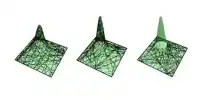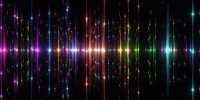Scientists develop Single Photons from a Silicon Chip for quantum light particles
Quantum physics depends on the ability to monitor the behavior of quantum particles as accurately as possible, for example by trapping individual atoms in magnetic traps or by transmitting individual photons through glass fibers. Quantum science holds immense promise: quantum computers are supposed to revolutionize database searches, AI processes, and numerical simulations just a few years from now. Quantum cryptography can now guarantee fully safe data transmission, although with limitations. The main benefit would be the best possible flexibility with our existing silicon-based electronics.
Physicists from the Helmholtz-Zentrum Dresden-Rossendorf (HZDR) and TU Dresden have designed a silicon-based light source to generate single photons that propagate well in glass fibers.
The above is the basis of quantum cryptography, a communication system that is, in theory, tap-proof: any data thief who intercepts photons eventually loses their quantum properties. The senders and receivers of the message will note this and will be able to interrupt the compromised transmission in time.
This requires light sources that deliver single photons. Such devices already exist, particularly based on diamonds, but have one flaw: “These diamond sources can only generate photons at frequencies that are not suitable for fiber optic transmission,” explains HZDR physicist Dr. Georgy Astakhov. “Which is a significant limitation for practical use So Astakhov and his team chose to use a new substrate – the tried and proven electronic base material of silicon.
100,000 single photons per second
In order to make the material deliver the infrared photons needed for fiber optic contacts, the experts subjected it to special care, selectively firing carbon into the silicon with an accelerator at the HZDR Ion Beam Core. This produced what is called the G-centers in the substance – two neighboring carbon atoms coupled to a silicon atom creating a kind of artificial atom.
As radiated with red laser light, this artificial atom absorbs the desired infrared photons at a wavelength of 1.3 microns, a frequency that is best suited for fiber optic communication. “Our prototype can produce 100,000 single photons per second,” Astakhov said. “And it’s all stable. Even after several days of continuous operation, we have not seen any weakening.” However the device only operates under very cold conditions – physicists use liquid helium to cool it down to a temperature of minus 268 degrees Celsius.
“We have been able to show for the first time that a single photon-based silicone source is possible,” Astakhov’s colleague Dr. Yonder Berencén is delighted to say. “This essentially makes it possible to integrate such sources with other optical components on a chip.” Among other things, it would be important to combine a new light source with a resonator to address the problem that infrared photons largely appear from the source at random. However, it would be necessary to generate photons on demand for use in quantum communication.
The light source on a chip
This resonator could be calibrated to reach exactly the wavelength of the light source, which would make it possible to maximize the number of photons produced to the point at which they are accessible at any given time. “It has already been proven that such resonators can be built in silicon,” Berencén states. “The missing link was a single-photon source based on silicon. And that’s just what we’ve been able to make.”
But before they can consider practical implementations, HZDR researchers still need to solve some of the problems – such as more rigorous development of new single-photon telecommunications sources. “We’re going to try to implant the carbon into the silicon with greater precision,” Georgy Astakhov says. “HZDR and its Ion Beam Center provide the ideal infrastructure for the realization of ideas like this.”














